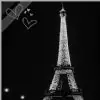Locking and Popping (Electric Boogie)
Electric boogie is a style of popping (ticking). Both locking and popping or ticking originally came from Los Angeles. Popping was created by street dance crew Electric Boogaloo. Locking was created by The Lockers Both locking and popping existed a long time before breaking was born. During breaking era, b-boys started to put popping and locking into their dance. Mr. Wiggles says, since people in NY twisted popping and made it more funky and something different from original popping, they call it electric boogie instead of popping. (This comment about Electric Boogie is different from the following artilce, though. I am not sure which is ture.) Nowadays, so-called "Breakdance" consists of breaking, locking, and electric boogie or popping. The following article is about history of locking and Electric boogie from a book "BREAKING AND THE NEW YORK CITY BREAKERS" written by Michael Holman in early 80s. I also put an article from Doc Boogaloo who is a member of Electric Boogaloo. He sent this artilce to me. This is very good article. Please check this out.
History
It was the robots on TV shows in the early '60s like "Lost in Space" that inspired the black kids in Los Angels to invent the dance the Robot. I don't think mime was as great an influence, after all, how many live shows has Marcel Marceau done in Watts? Obviously mime was inspirational in the development and perfecting of the Robot. The sense of animation and futurism is strong in most poor inner-city kids because it's an escape to a world where everything is perfect, sharp, and in control. The hydraulic movements of the robot danced to music which was becoming more and more mechanically rhythmic, like James Brown's "Goodfoot" (1969), was a natural development in Los Angeles, a city of major street dance creations. In 1969, a young black man by the name of Don Campbell was becoming known among street dancers in Los Angeles for inventing a dance called the Campbellock (he put out a record called "Do the Campbellock"). Don Campbell took the hydraulic robotic movements, which were all about total control and mixed it with wild, out of control body movement dances of the tap-flash dance days plus exact stop and start movements and spiced it all with comic facial expressions and clown-like costumes to develop a whole new dance movement which is still going strong called "Locking" (Campbellocking to us old guys. I lived in L.A. when it first came out and was a pretty good Campbellocker myself.) The best way to describe the movement of locking would be thus: You know those little-figured toys that are like inside-out puppets on small plastic circular platforms or pedestals, and if you press the bottom of the platform the figure collapses real fast, then when you let your finger up it goes back into shape? Well that's what locking looks like. The body moves out of control then back into control snapping into position, collapsing then snapping back. By the Early '70s Don Campbell had put together a whole crew of lockers called "The Lockers." One of the lockers was Shabadoo, the star of "Breaking," and Penguin, who was the chubby locker named "Rerun" on the TV show "What's Happening." The lockers of the early '70s wore platform shoes, loud striped socks, pegged pants that stopped at the knees, bright colorful satin shirts with big collars, big colorful bow ties, gigantic Apple Boy hats, and white gloves. Around that time a known TV choreographer named Toni Basil, who was famous for shows like "Shindig," and "Hullaballoo," discovered Don Campbell and his Lockers and helped bring them to international fame. She was an incredible dancer herself and soon learned to lock. She became a member of The Lockers, helped develop their dance act, and got them on TV shows like "Saturday Night Live" and commercials such as Schlitz Malt Liquor Beer (the one with the bull). I remember seeing her and Don Campbell dance live at a nightclub called Crenshaw Flats in Los Angeles. I was blown away. She was actually better than he was! Also around the time "Soul Train" hit the air (1972) and it became an instant media hit by featuring street dancers, especially The Lockers, of Los Angeles. The nightclub Crenshaw Flats the apartment on Crenshaw Boulevard in Los Angels was where the "Soul Train" gang hung out. At the time breaking was developing in New York, locking the The Robot were getting popular in southern California. During 1972 and '73 in Fresno, California, a small city halfway between Los Angeles and Dan Francisco, a black family of all boys were inventing something new of their own. They called their dance the Electric Boogaloo. Pistol Pete (who also starred in the film "Breaking" and was involved with Toni Basil and The Lockers and "Soul Train" in the early days) and his brothers had created The Electric Boogaloo by combining locking. The Robot, and the more smooth and controlled movements of mime. Instead of throwing their bodies in and out of control like locking, or in total hydraulic control like The Robot, they passed energy through their bodies popping and snapping elbows, wrists, necks, hips and just about all the body joints along the way. Electric Boogaloo was more like mime in the sense that it pantomimed a live wire of electrical current, but it still needed the control of The Robot to give it style. The Electric Boogaloo became big in San Francisco even before it hit Los Angeles but when it did hit L.A., the TV capital of the world, it was introduced through "Soul Train" as the new dance form and challenged the popularity of locking. The Electric Boogaloo (or Electric Boogie as it's called now) has since spread to New York as breaking later hit Los Angeles. It's interesting to see breaking and locking existing in the same sub-cultures. I think it's partly because they complement each other as opposites. The Electric Boogie is in control and tends to imitate the movements of nature like a lightning bolt or a rippling river, whereas breaking is more out of control and anti-nature or anti-gravitational like a flying saucer. Another reason they're done together with the same kids may also be that they're both competitive dances where dancers battle each other to determine who's best. "If my breaker can't beat you, my boogie can." They live in the same competitive atmosphere. Because of its competitive nature, I see Electric Boogie also becoming a competitive sport. This might seem odd because unlike breaking, it's hard to judge, but it will go the way of breaking because they have become inseparable in a cultural dance movement. It will evolve into a competitive thing.Written by Michael Holman in early 80s.



























